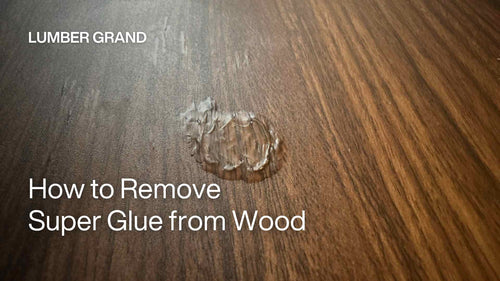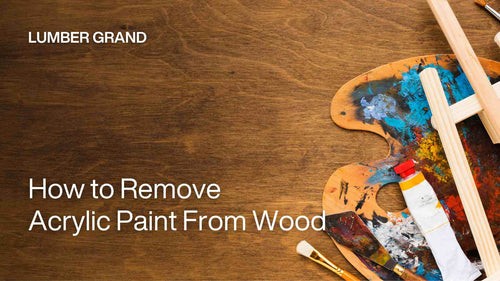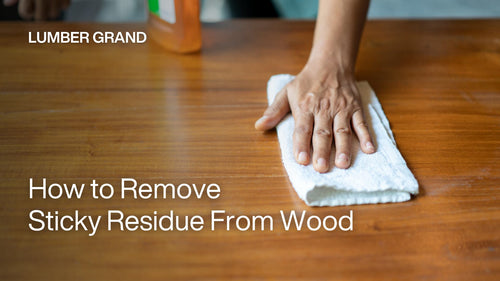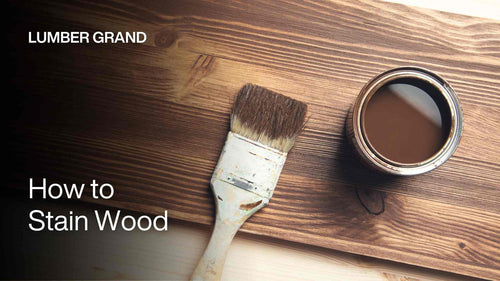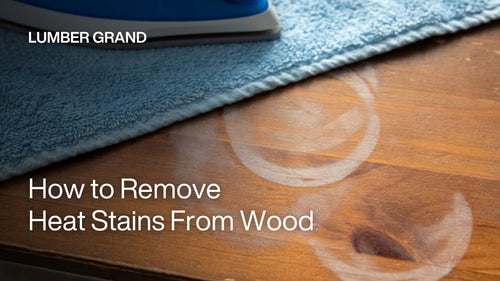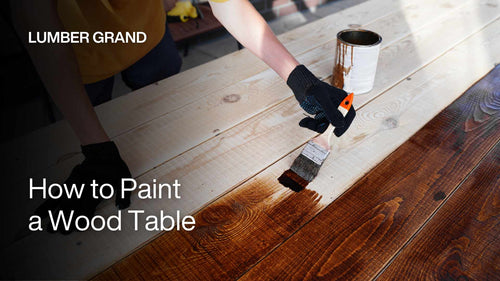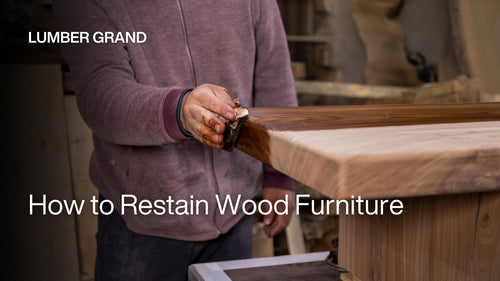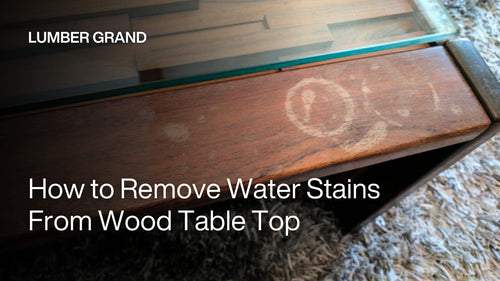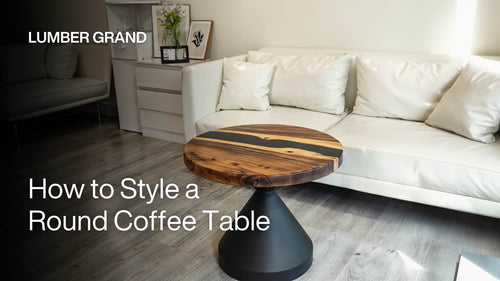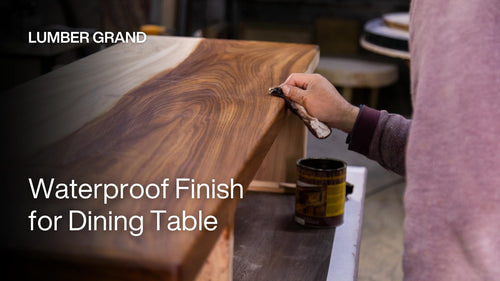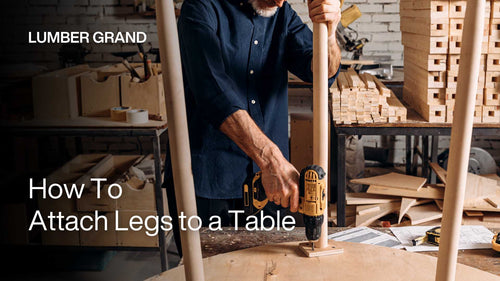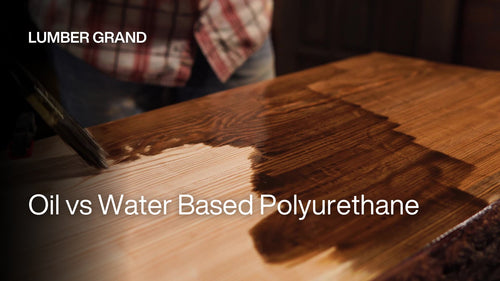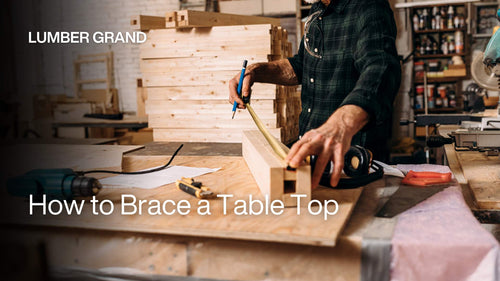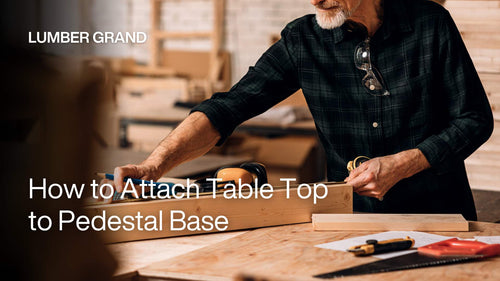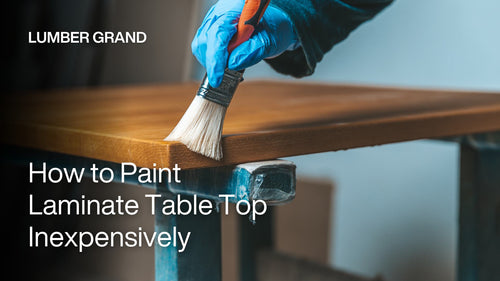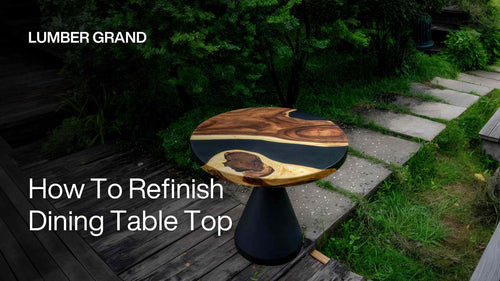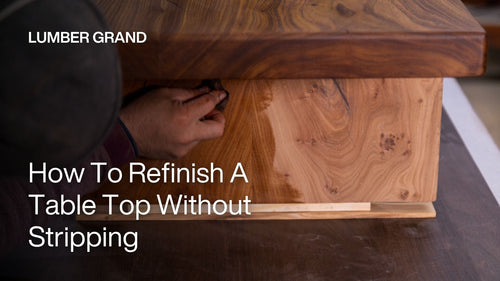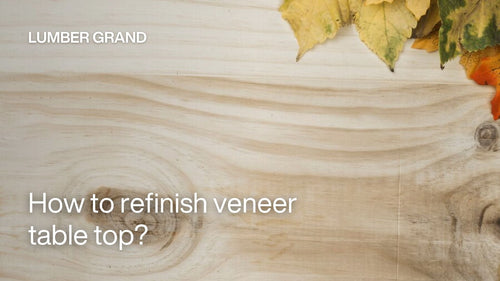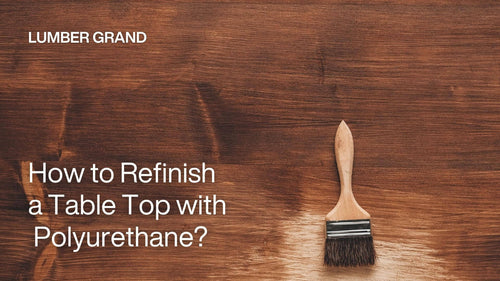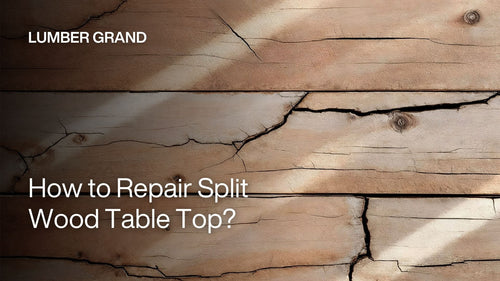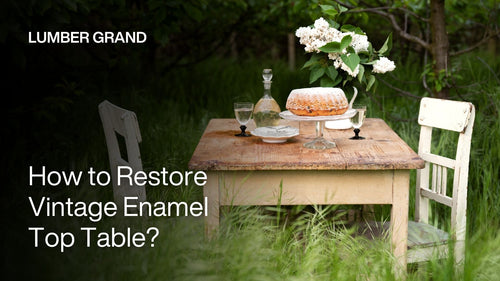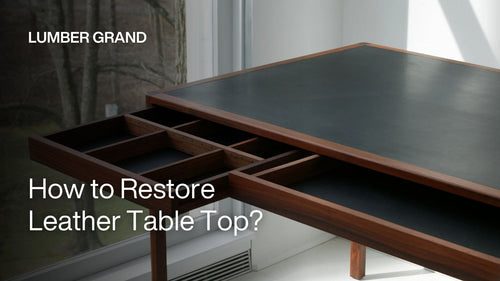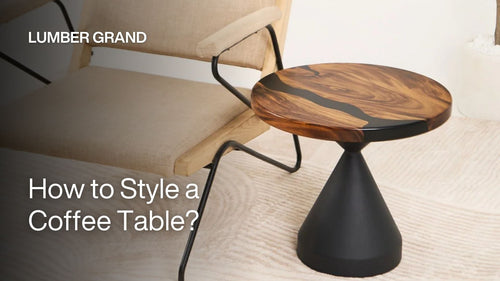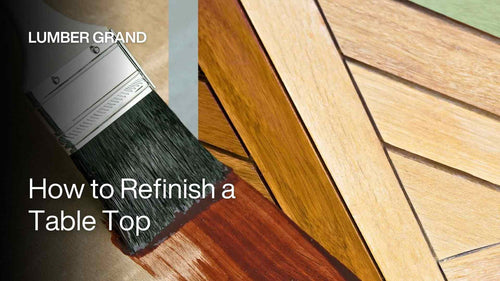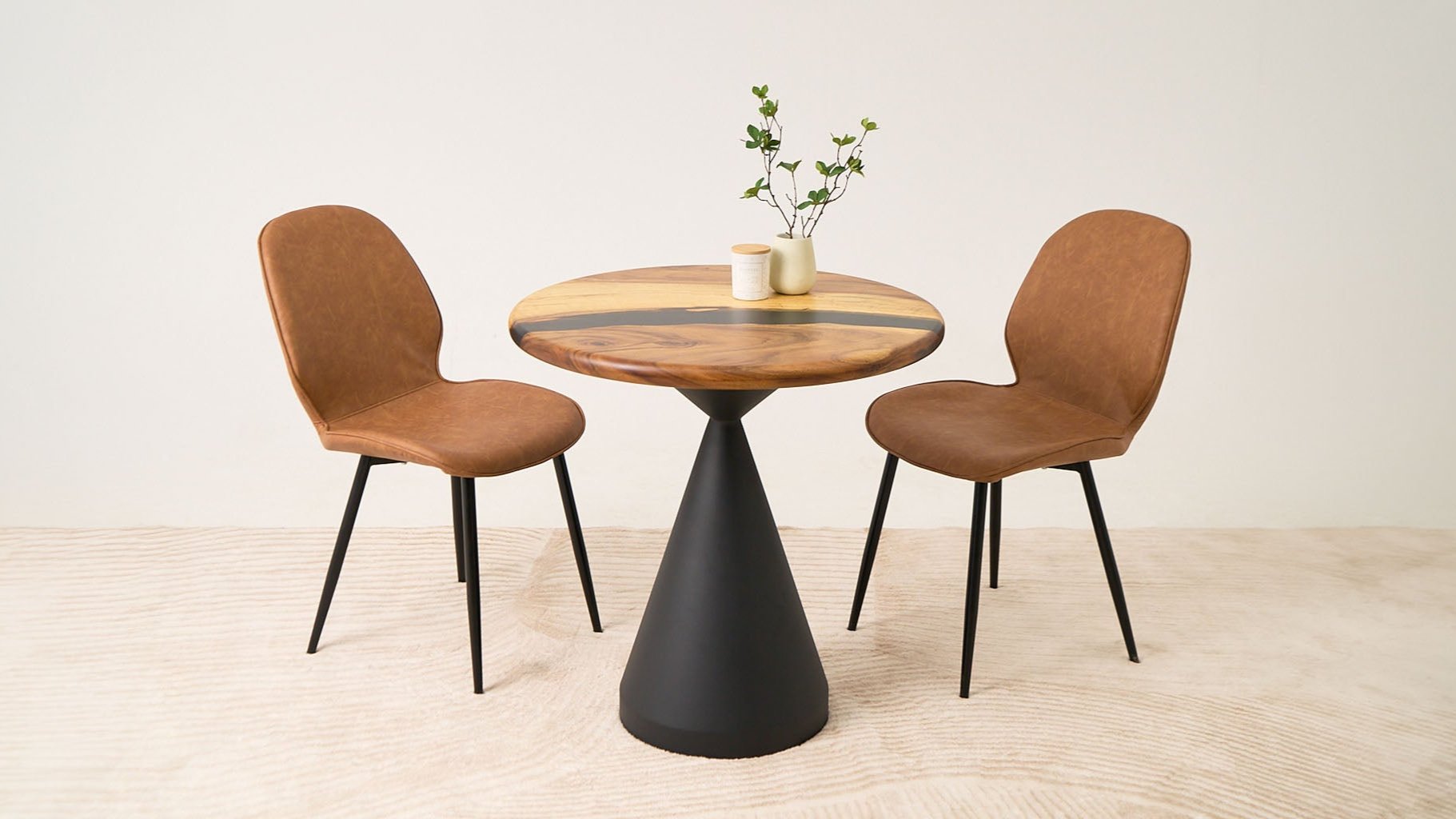The process of pouring epoxy for tables requires meticulousness and following each step precisely to get the perfect result. In this article, Lumber Grand will guide you how to pour epoxy table in 9 simple steps, helping you create a beautiful epoxy table right at home. Follow along below!
Why It’s Important to Pour Epoxy Table Correctly?
Epoxy is a synthetic resin composed of 2 components that react chemically and harden into an extremely hard and durable substance when mixed. Epoxy applied correctly will give you a surface that is bright, transparent, and extremely durable.
The application of epoxy through the proper method affects the quality and durability of the tabletop directly. If the mixture is incorrectly prepared, epoxy might not even set at all. If poured improperly epoxy would develop concave and convex areas on the surface, which would mar the aesthetics of the product.
 Epoxy table products with smooth surface, high durability when epoxy is poured properly
Epoxy table products with smooth surface, high durability when epoxy is poured properly
Shop now: Round Epoxy River Table Top 19 Inches; Round Epoxy Coffee Table 35 Inches
How to Pour Epoxy Table for Beginners?
To help you get familiar with the epoxy pouring process, we will share detailed step-by-step instructions on how to pour epoxy table. Each step is explained specifically with important notes to help you avoid common mistakes.
1. Step 1: Essential Tools and Materials
Before pouring epoxy for the table top, you need to prepare the following tools and materials:
-
Deep pour epoxy resin for the table (consisting of two components: resin and hardener).
-
Epoxy pouring mold or frame.
-
Electronic scale (to accurately measure the mixing ratio).
-
Mixing stick and mixing bucket (preferably PP or PE plastic bucket).
-
Drill or stick (to help mix evenly and faster).
-
Rubber gloves.
-
Goggles and mask.
-
Heat gun or blowtorch (to remove air bubbles).
-
Sandpaper of various types (P120, P240, P400, P600, P1000, P1500, P2000).
-
Soft cloth and polishing solution.
-
Plastic tarp (to protect the work area).
-
Mask tape and carving knife.
 Prepare all tools and materials before pouring epoxy to save time
Prepare all tools and materials before pouring epoxy to save time
Photo: ©welcomia on Canva.com
2. Step 2: Prepare Workspace & Safety Measures
You should choose a well-ventilated place with a stable temperature of about 70 - 75°F and humidity below 85%. Spread a plastic sheet to protect the floor and surrounding surfaces because epoxy is difficult to clean after it hardens.
How to pour epoxy table? You should wear rubber gloves, goggles and a mask to help protect your eyes and respiratory tract. You also need to prepare paper or cloth to deal with any epoxy spills.
 Prepare protective gear because the smell of epoxy can be harmful to your health
Prepare protective gear because the smell of epoxy can be harmful to your health
Photo: ©Rawf8 on Canva.com
3. Step 3: Prepare the Mold and Wood Surface
First, you need to sand the surface of the wood to remove paint or old dirt. Start with thick sandpaper (P120) and then go to a thinner sandpaper (P240) to smooth the surface. Check the planning of the wood surface with a straight edge. This step is crucial in how to finish epoxy table projects to ensure a smooth, even base for the epoxy application.
If there are gaps or cracks, you can use wood mass mixed with wood glue to fill them. After drying, sand again to make the surface even. For the mold, you can use a wooden or silicone structure, which is strongly attached to the surface of the wood and has no gaps. Use silicone to seal the joints to prevent the epoxy from leaking.
Before spilling the epoxy, you must apply a booklet to the surface of the wood to increase the adhesion of the epoxy. This is especially important for woods with many natural oils such as teak or walnut.
 Prepare the wood surface and epoxy mold
Prepare the wood surface and epoxy mold
Photo: ©Ellinnur Bakarudin on Canva.com
4. Step 4: Mixing the Epoxy Correctly
Most epoxy usually has a 1:1 or 2:1 mixture rate of resin to hardener. But to be safe, read the manufacturer's instructions carefully to obtain the correct proportion. Pour the two components into the mixing container and stir for about 3-5 minutes.
If you are using a drill with a mixture toothpick, define it at low speed to avoid creating many air bubbles. Mix a movement from the figure 8 motion, ensuring a thorough mix it from the bottom to the top.
After the mixture, let the epoxy rest for about 5 minutes to allow the air bubbles to rise to the top and escape. This will help reduce the number of air bubbles in the epoxy when it is shed.
 Mix epoxy according to the manufacturer's ratio
Mix epoxy according to the manufacturer's ratio
Photo: ©Thirdman on Canva.com
5. Step 5: Pouring the First Seal Coat
The seal coat is the first thin layer of epoxy inserted on the wood surface to "seal" and create a foundation for the next layers. Putting the main epoxy layer in this layer is the role of preventing the bubble of the wind from avoiding the wood surface.
The ideal thickness for the seal coat is about 1-2 mm. You can use a paint brush or roller to apply epoxy on the entire wooden surface, ensuring that you do not miss any corner. After inserting it, you can use a heat gun or blowtorch to remove air bubbles. Wait for this epoxy layer to dry for 4-6 hours.
A common question is "How thick should the epoxy be?" Generally, the total thickness of the epoxy layers should be 3-6 mm depending on the purpose of the use. For a desk, 3-4 mm is enough, but for a dining table or bar, you can put it thick for increased durability.
Shop all desk table tops designed to match your interior style
 Apply a thin layer of epoxy first as a primer to limit air holes when completed
Apply a thin layer of epoxy first as a primer to limit air holes when completed
Photo: ©sandsun on Canva.com
6. Step 6: Pouring the Second Epoxy Coating
The second coat of epoxy may be applied once the first has set (still a little tacky to the touch). This coat is usually applied in a thicker manner (3-4mm) to give depth and luster to the surface of the table.
How to pour epoxy table, first check the seal coat for cracks or air bubbles. If there are any defects, gently sand them down with P400 sandpaper to take away all these imperfections.
Then prepare the epoxy for the second coat as per step 4, using the proper ratio and technique. Next, you pour the epoxy from the center of the table, allowing it to flow out to the edges. The trick is that you can add more varnish after the epoxy is completely dry and polished. The varnish will help protect the epoxy table top from UV rays and scratches, while also adding shine.
 Apply second coat of epoxy to the surface of the wooden epoxy table
Apply second coat of epoxy to the surface of the wooden epoxy table
Photo: ©SaevichMikalai on Canva.com
7. Step 7: Using Heat Gun or Blowtorch to Remove Bubbles
You need to remove the air bubbles using the heat gun or blowtorch. For that, keep the heat gun about 15-20 centimeters from the epoxied surface and move it in a circular motion, similar to number 8.
If you are using a blowtorch, it is important to exercise extreme caution as this torch burns hotter. Maintain it a bit farther away this time probably 25 to 30 cm from the surface and do it quickly. The blowtorch flames should never come in contact with the epoxy surface.
After pouring the epoxy, you have 10 to 15 minutes to get rid of any air bubbles that may be trapped in it while the epoxy is still runny enough for air bubbles to escape. If any continue to be present after 30 minutes, repeat this procedure.
 Remove air bubbles with blowtorch
Remove air bubbles with blowtorch
8. Step 8. Curing and Drying Process
The phases in how to pour epoxy table includes hardening and drying steps, drying time depends on the type of epoxy, room temperature and humidity, but usually ranges from 24-72 hours. It will take 7-10 days to dry completely.
You should protect the epoxy surface from dust and insects by placing a plastic sheet on top, but do not let it touch the epoxy table top surface. Keep the work area at a stable temperature, avoid sudden temperature changes that can cause the epoxy to crack.
 Wait for the epoxy layer on the table surface to dry
Wait for the epoxy layer on the table surface to dry
Photo: ©Nadiia Borodai on Canva.com
9. Step 9. Sanding and Polishing for a Perfect Finish
After the epoxy tabletop has completely dried. Begin with sanding recommended, using water on both the sandpaper and the epoxy surface. First, P400-grit sandpaper should be used to eliminate any slight irregularities or remaining air bubbles. Then, use finer grades in sequence if you want a more perfect surface: P600, P1000, P1500 and P2000.
After completing sanding operations with P2000, the gloss finish is worked with a special compound made for epoxy. Apply the compound over the surface and polish either with a polishing machine or with the use of a soft cloth by hand.
Clean the surface and use a final hand application of an anti-UV protective finish wax or varnish for durability and protection of the epoxy surface from UV rays.
 After the epoxy table surface is completely dry, sand and polish
After the epoxy table surface is completely dry, sand and polish
Photo: ©slobo on Canva.com
Troubleshooting Common Epoxy Table Issues
Even if you follow the how to pour epoxy table above, you may still encounter some problems when working with epoxy. Below we will explain the causes of errors and how to fix them.
1. Why Is Epoxy Cloudy?
Epoxy opacity can be caused by high humidity in the air or uneven mixing of epoxy, low temperature is also the cause.
Solution: If the epoxy has cured, you can sand the entire surface and pour a new layer of epoxy on top. If it is still in the curing stage, you can use a heat gun to increase the temperature and promote the chemical reaction.
2. Fixing Uneven Epoxy Surfaces
Uneven epoxy surfaces can be caused by not pouring enough epoxy. When there is not enough epoxy to create an even coating, the surface will have concave and convex areas. If the table is not placed on a flat surface, the epoxy will flow to one side. Or in high temperature conditions, the epoxy will harden too quickly, which will also cause uneven surfaces.
How to fix: For concave areas, you can pour another thin layer of epoxy to fill them. For convex areas, you need to sand to smooth the surface. In severe cases, you may need to grind the entire surface and pour a new layer of epoxy.
3. Why Does Epoxy Not Dry?
Incorrect mixing ratio, uneven mixing will cause the epoxy coating to not dry. Temperature is too low: Epoxy needs a minimum temperature (usually 18-20°C) to react and harden. Another case is that the epoxy has expired.
If the epoxy is still sticky after 48 hours, you can try increasing the room temperature or using a heating lamp to increase the local temperature. In the worst case, you need to remove the uncured epoxy and pour it again from the beginning with new epoxy and the correct mixing ratio.
Additional Tips for a Stunning Epoxy Table
In addition to the how to pour epoxy table, apply the following tips to create a unique table:
-
Color effect: Use specialized pigments or ink to create marble patterns, drop color onto the surface and use a stick to draw the pattern.
-
Decorative materials: Dip leaves, dried flowers, seashells, small stones... into epoxy, make sure to dehydrate to avoid air bubbles.
-
Sea effect: Use blue, white and glitter to create sparkling ocean waves.
-
Preservation: Avoid heavy objects, direct heat; use coasters, wipe with soft cloth, avoid strong chemicals.
-
Surface treatment: Periodically polish, apply protective wax every 6-12 months.
During the process, if you have any difficulties, you can contact us via email contact@lumbergrand.com or visit the website https://lumbergrand.com for advice or to refer to quality epoxy table products.
Although how to pour epoxy table requires meticulousness and patience, the results are completely worth the effort. Following the 9 steps, you can create a beautiful and durable epoxy table.









